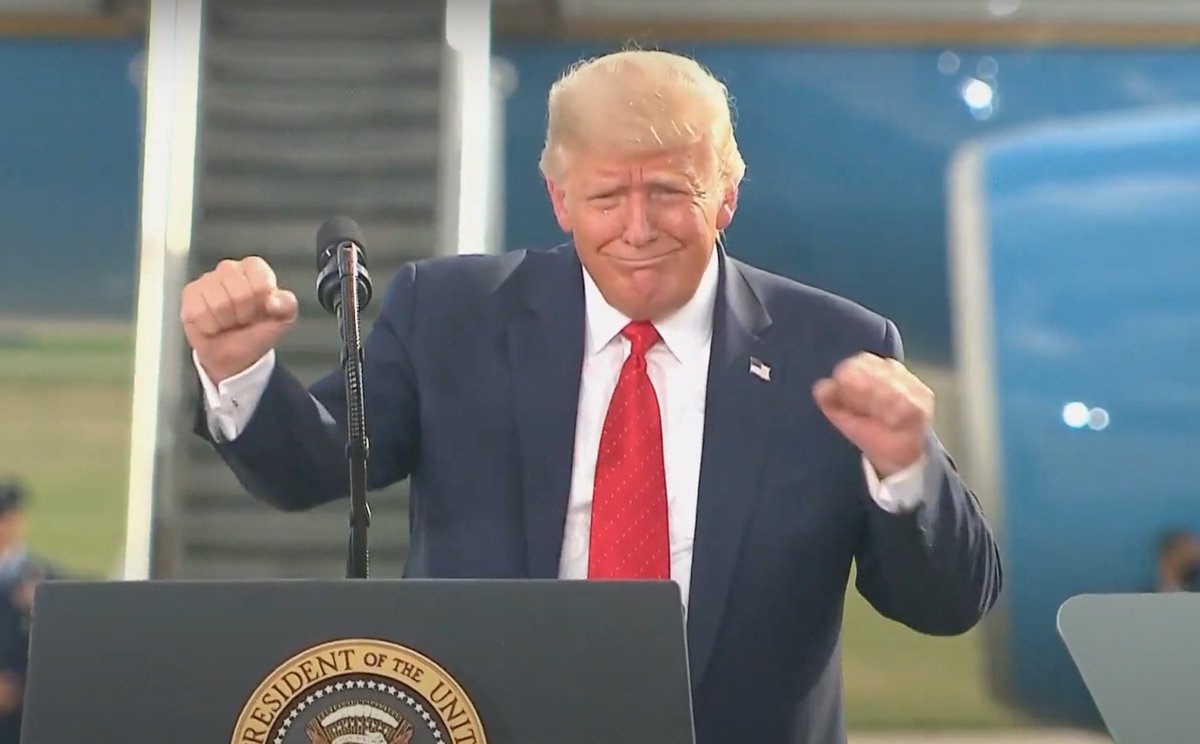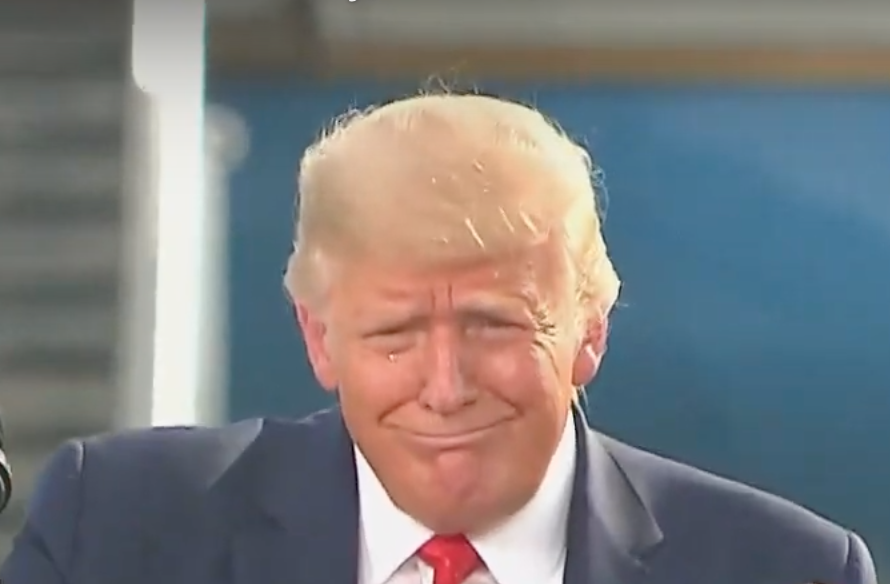THREAD: Body Language Analysis No. 4314: Donald Trump, The Supreme Court, Abortion, and Punishment - #Nonverbal & #EmotionalIntelligence • • #BodyLanguage #BodyLanguageExpert #AbortionRights #Abortion #Punishment #SupremeCourt #RoevWade
1/ In the light of Associate Justice Anthony Kennedy's announcement of his retirement from the Supreme Court, the interview included here is profoundly important. In March 2016, Chris Matthews spoke with then-candidate Trump in a town hall type setting.
2/ One of the questions Mr. Matthews pressed Mr. Trump on was that of abortion - and specifically, because Trump believes abortions should be illegal - what was his view on the issue of punishment for women who undergo abortions?
3/ In this image (captured from the above video during 2:16) - when Mr. Trump was attempting to formulate his response to Chris Matthews' question of, "... Do you believe in punishment for abortion - yes or no - as a principle?". 

4/ Donald Trump commonly displays several nonverbal signals which are distinctly beta (and feminine). One of these in exampled here.
5/ This display is much more commonly seen with women and gay men - but when it's displayed by a straight man, it projects a low-confidence/unsure/beta emotional tone.
6/ Note the position of Trump's right wrist. It's extended (bent backward) close to its maximum. When a straight man displays this body language, it sends signals of low confidence.
7/ Moreover, when coupled with an upper arm that's positioned very closely to the torso (as we also see Trump doing), this nonverbal behavior cluster transmits even deeper beta and unsure emotions.
8/ Notice also, Trump's eyes are looking up - fixated in the distance (middle-distance). This is a common direction of gaze and focus behavior associated with the formulation of an answer.
9/ Then, just a couple seconds later (2:18 - 2:20), once Trump makes up his mind ("... there has to be some form of punishment - Yeah. There has to be some form."), he first positions his hand in a vertically straight, ready-to-chop fashion, and then ... 

10/ ...proceeds to quickly chop his hand in a very assertive (even hyper-assertive), decisive, alpha manner. Trump commonly uses this gesture - however, it's not typically temporally juxtaposed with a hyper-beta display as does here.
11/ SUMMARY: Donald Trump had not thought through this question prior to Chris Matthews asking it. The candidate's nonverbal behavior displayed here - a low confidence signal followed rapidly by a high-confidence signal - ...
12/ ...is a window into the unsure mind of a person formulating his decision in that moment. We are seeing cognitive dissonance followed by a decision and absolutism. Upon deciding, Mr. Trump rapidly emotionally morphs into the bravado of hyper-confidence.
....
....
13/ Moreover, in this particular context, his hand-chop also projects the additional visual metaphor of severe punishment for abortion.
END
END
• • •
Missing some Tweet in this thread? You can try to
force a refresh









